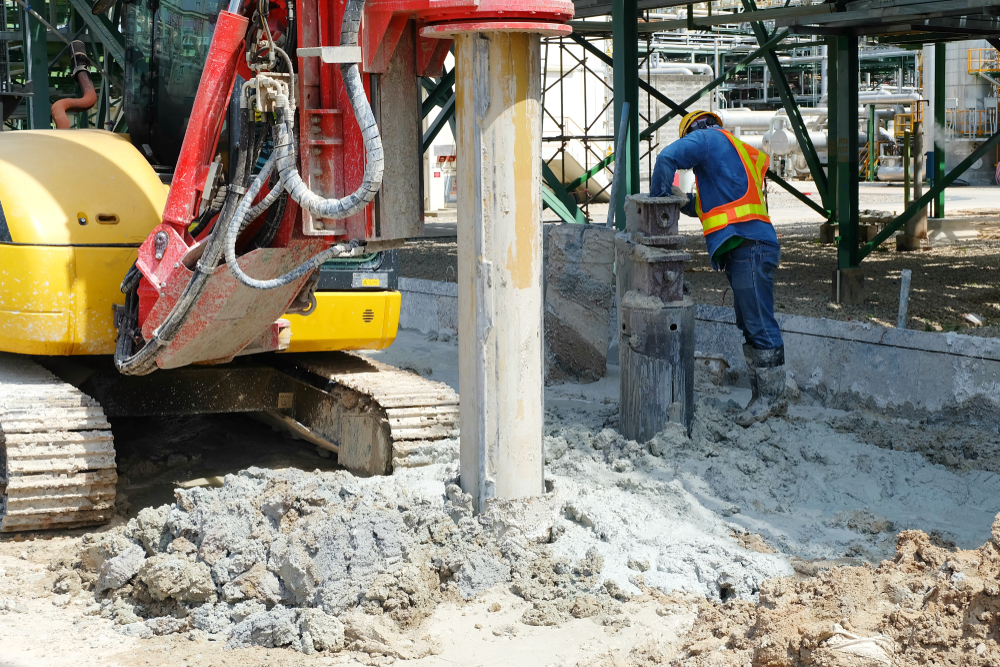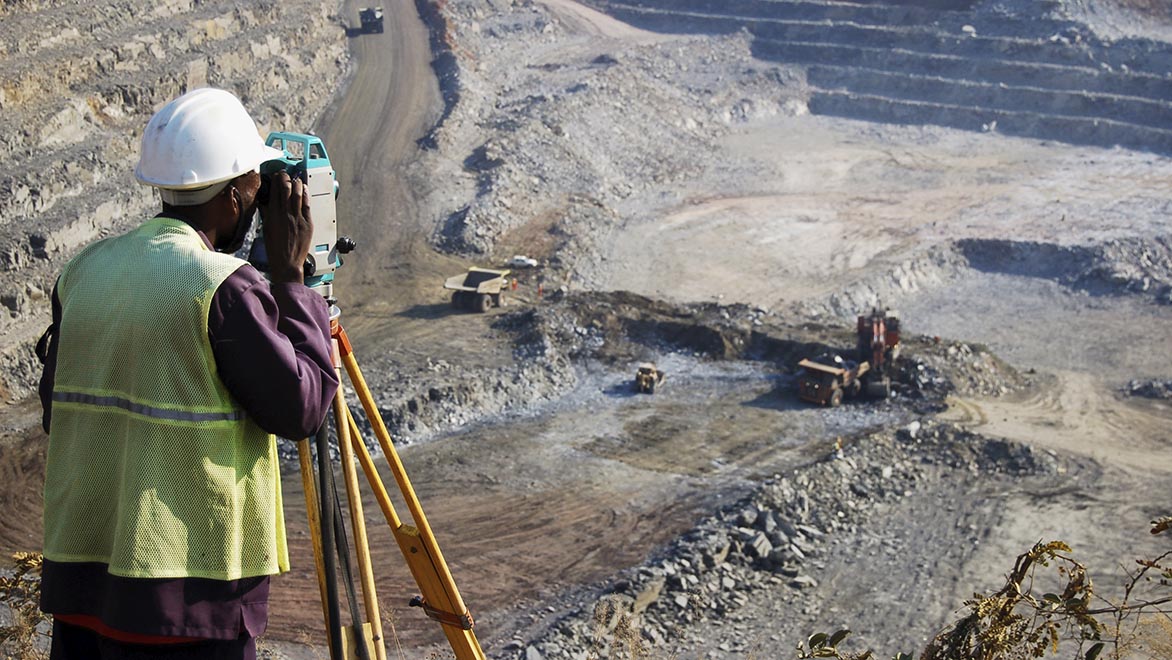Exploring the Duty of a Geotechnical Engineer Description and Duties
Exploring the Duty of a Geotechnical Engineer Description and Duties
Blog Article
Checking Out the Essential Principles and Applications of Geotechnical Design for Lasting Facilities Advancement
The intersection of geotechnical engineering and lasting facilities growth offers a compelling possibility to improve both style effectiveness and ecological obligation. By recognizing essential principles such as soil technicians, site characterization, and structure layout approaches, engineers can develop remedies that are not just effective however also decrease environmental footprints. The integration of lasting practices into geotechnical jobs raises concerns concerning resource use and lasting durability. As we take a look at these concepts, the implications for future framework jobs call for mindful factor to consider, particularly in an era increasingly defined by environmental challenges.
Key Concepts of Geotechnical Design
Recognizing the essential principles of geotechnical engineering is crucial for developing sustainable infrastructure (geotechnical companies in south africa). This self-control concentrates on the communication between soil, rock, and frameworks, playing an essential function in the security and efficiency of design jobs. The foremost principle is the analysis of subsurface conditions with site examinations, which supply beneficial information regarding dirt residential properties, stratification, and groundwater degrees
An additional vital principle is the application of reliable anxiety theory, which assists designers comprehend how soil behavior modifications under differing lots. This understanding is important for assessing the bearing ability of foundations and guaranteeing that frameworks can endure both vibrant and static forces.
Additionally, the principles of soil-structure communication and slope stability are essential to geotechnical layout, as they inform choices on the positioning and style of maintaining inclines, walls, and embankments.
Last but not least, geotechnical engineers have to think about sustainability by advertising using locally sourced materials, lessening environmental impact, and enhancing styles for durability. By sticking to these concepts, geotechnical design contributes dramatically to the production of resistant and sustainable infrastructure that meets the needs of society while safeguarding the setting.
Soil Mechanics and Its Relevance
Dirt auto mechanics acts as the structure of geotechnical engineering, providing the scientific principles needed to assess the behavior of soil under various conditions. Recognizing dirt auto mechanics is vital for predicting just how soil will react to tons, modifications in wetness web content, and various other ecological aspects. This understanding enables designers to design frameworks that can endure the pressures exerted by the soil and make certain security and safety.
The research study of dirt mechanics includes numerous aspects, including soil category, shear permeability, toughness, and compressibility. These variables affect the design of structures, keeping walls, and various other geotechnical frameworks, making it vital to analyze dirt properties accurately. For circumstances, the shear stamina of dirt straight influences the security of excavations and inclines, while compressibility impacts negotiation forecasts for structures.
Furthermore, dirt technicians plays an important function in sustainable infrastructure growth. By understanding the soil's behavior, designers can minimize environmental effects, optimize material usage, and improve the longevity of frameworks. This integration of dirt auto mechanics into geotechnical engineering practices not just makes sure safety but likewise adds to the overall sustainability of building jobs, advertising efficient resource monitoring and ecological stewardship.
Site Characterization Techniques
Reliable website characterization strategies are crucial for collecting necessary details about subsurface conditions before building - geotechnical engineer description. These More Info methods supply valuable understandings right into soil residential or commercial properties, rock developments, groundwater levels, and possible geohazards, consequently notifying task design and mitigating risks
One widely used approach is piercing, which permits direct tasting of dirt and rock layers. This can be matched by in-situ screening, such as Basic Penetration Examinations (SPT) and Cone Penetration Examinations (CPT), to evaluate soil strength and stratification. Geophysical techniques, consisting of seismic refraction and electric resistivity surveys, enable non-invasive evaluation of subsurface products and frameworks, using a broader perspective on geological conditions.
In addition, laboratory screening plays an essential duty in assessing soil samples gotten from drilling. Tests such as grain size evaluation, Atterberg limitations, and triaxial shear examinations generate vital data on dirt behavior under numerous loading conditions.
Incorporating these site characterization strategies not just improves the understanding of site problems yet likewise supports lasting facilities advancement by guaranteeing that jobs are made with suitable safety and security margins and performance specs. Hence, a detailed website characterization is essential for notified decision-making in geotechnical engineering.
Structure Layout Approaches
Foundation layout approaches are essential for making certain the security and long life of structures in different geotechnical contexts. These approaches begin with a complete site examination, which includes dirt screening and analysis to establish the physical residential properties of the subsoil. Understanding dirt behavior under lots is essential for picking the ideal foundation type, whether shallow or deep.
Superficial foundations, such as spread grounds or mat foundations, are usually utilized when suitable soil layers are offered near the surface area. On the other hand, deep foundations, such as piles or drilled shafts, are used in circumstances where surface area dirts are inadequate to support architectural loads.

Lasting Practices in Geotechnical Engineering
The assimilation of sustainable methods in geotechnical engineering plays an essential role in enhancing the environmental and financial practicality of facilities jobs. By prioritizing source efficiency and lessening ecological influences, designers can contribute to the growth of resistant framework systems.
One trick lasting practice involves the usage of alternate materials, such as industrial spin-offs and recycled accumulations, which can decrease the demand for virgin resources and reduced carbon emissions. Additionally, soil stabilization strategies, including the application of bioengineering approaches, improve soil properties while advertising environmental equilibrium.
Additionally, the application of sophisticated geotechnical modeling and tracking innovations allows for far better forecast and management of ground conditions, resulting in maximized style options and source application. These Check This Out modern technologies likewise help with the assessment of long-term performance, guaranteeing that frameworks remain secure and practical over their lifespan.

Final Thought
In conclusion, the concepts and applications of geotechnical engineering play an essential role in lasting framework growth. Emphasizing dirt auto mechanics, website characterization, and innovative structure design techniques enhances the resilience and efficiency of frameworks.
By recognizing vital principles such as soil mechanics, website characterization, and foundation layout techniques, engineers can produce remedies that are not just reliable but likewise reduce environmental footprints.Soil auto mechanics serves as the structure of geotechnical engineering, offering the scientific principles required to analyze the behavior of soil under different conditions. Understanding dirt mechanics is important for anticipating exactly how dirt will certainly respond to tons, adjustments in wetness content, and other environmental aspects.The study of dirt mechanics encompasses numerous elements, consisting of dirt classification, shear leaks in the structure, compressibility, and stamina. These elements influence the style of structures, keeping walls, and other geotechnical frameworks, making it necessary to evaluate dirt homes precisely.
Report this page